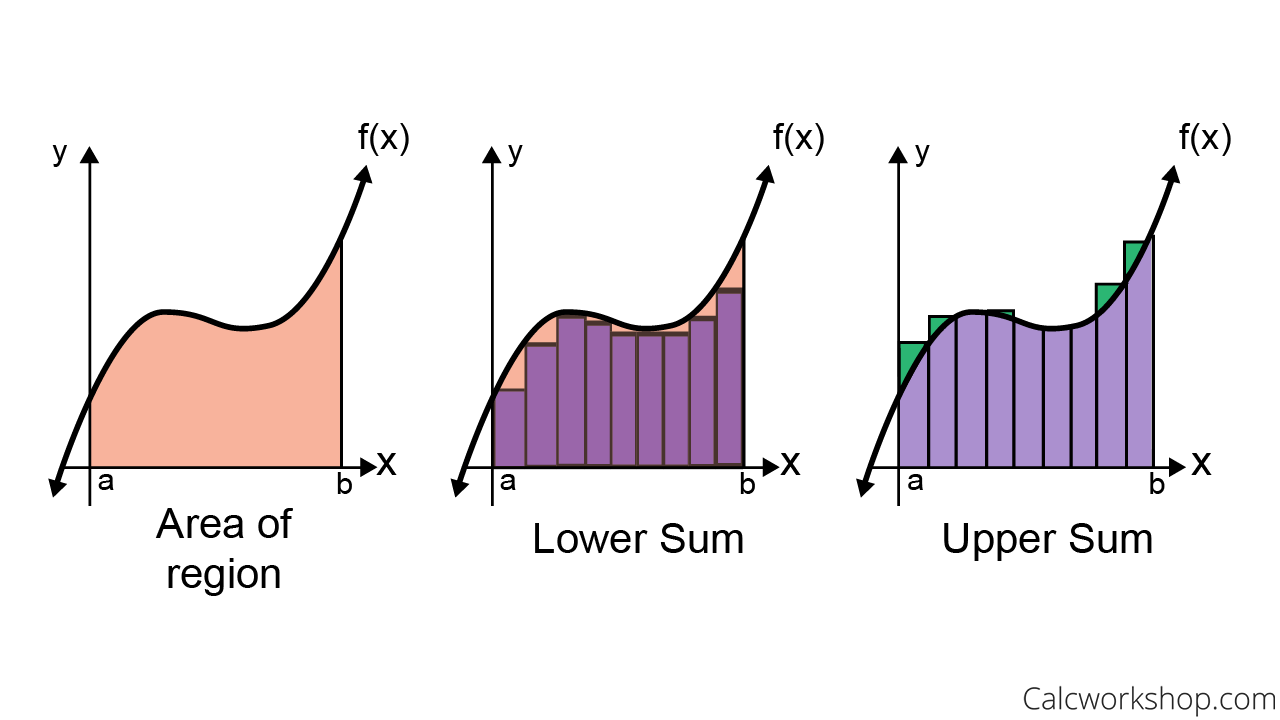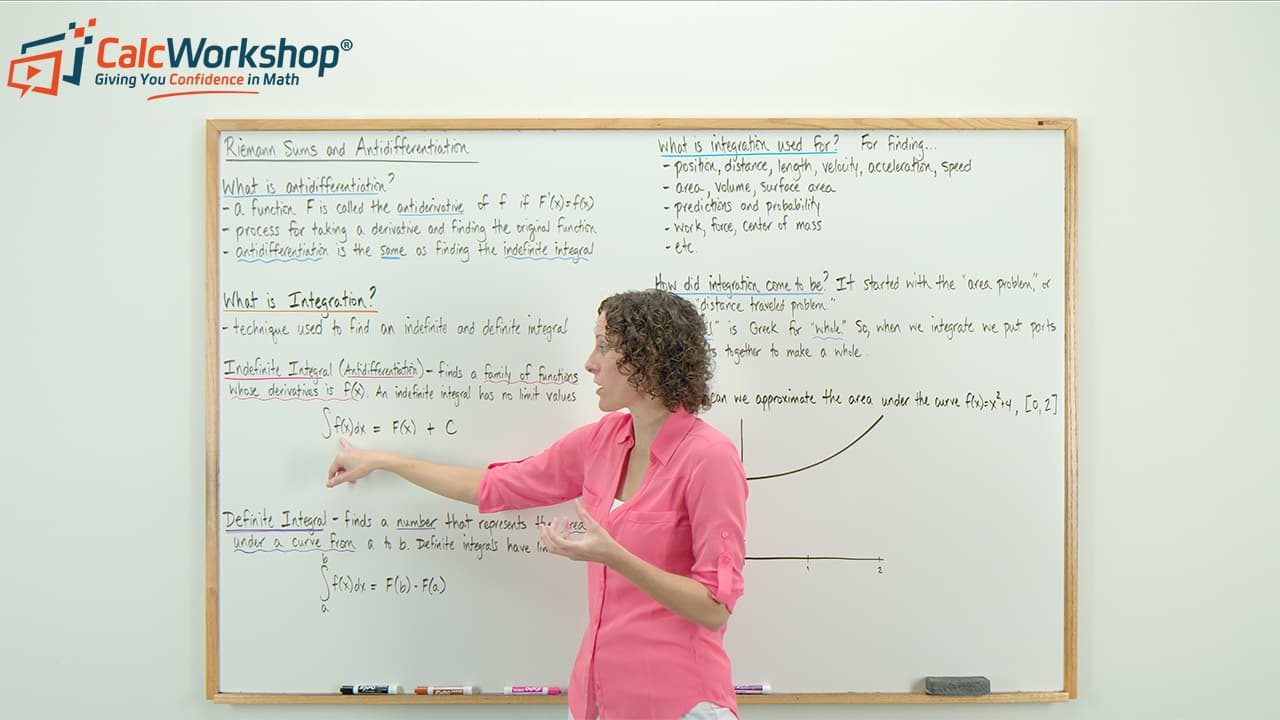Have you ever felt the desire to “UNDO” something?

Jenn, Founder Calcworkshop®, 15+ Years Experience (Licensed & Certified Teacher)
Consider how in math, every action has a REVERSE.
For example, subtraction is the “UNDO” for addition, and division is the REVERSE for multiplication.
Square roots “UNDO” squares, and logarithms REVERSE exponentials.
This concept continues in calculus with anti-differentiation reversing differentiation.
What’s that?
Well, it’s the antiderivative or, as I like to say, “the derivative in reverse” or “backwards derivatives.”
Isn’t it interesting how math consistently offers a way to backtrack? Much like that CTRL-Z shortcut on your keyboard (CMD-Z for you Mac Folks)
In other words, Anti-Differentiation is like CTRL-Z(ing) the derivative to return to the original function!
Your Key Concepts:
Antidifferentiation:
- Antidifferentiation is reversing differentiation.
- It means finding the original function when we know its rate of change. Put simply, if
- Then its antiderivative
Riemann Sums:
- Riemann sums are a way to guess the area under a curve by breaking it into simple shapes like rectangles or trapezoids.
- The more shapes we use, the closer we reach the true area.
- Different rules, like the Left Endpoint Rule or Midpoint Rule, guide us in estimating how big these shapes should be to mimic the curve’s shape.
Definite Integration:
- Definite integration is about finding the precise area under a curve from point
- It refines the Riemann sums to the point where the rectangles (or other shapes) are infinitely thin, giving the exact result.
- Mathematically, it calculates
Now let’s learn more about each of these ideas…
Integration: The Smoother Way to Say “Anti differentiation”
But antidifferentiation and antiderivative are quite a mouthful to say, don’t you think?
Thankfully, another way of saying antidifferentiation is to say Indefinite Integration, or more simply, integration.
Before we go any further, we need to talk about two types of integration:
- Indefinite
- Definite
Indefinite Integration helps us to find the family of functions F(x) when we are given its derivative f(x).
Definite Integration is the process of finding a numerical value that represents the area under a curve over an interval [a,b].
Also known as the Riemann Integral.
Next, we’ll explore how Riemann Integration works to give us these precise numbers.
Integration: The Tool for Area Measurement
One of the most useful things that integration does for us, besides undoing the derivative, is to calculate the area of a plane region!
In other words, it calculates the area under the curve!
Bernhard Riemann, a pioneering German mathematician, found an ingenious way to estimate the area under curves. He did this by breaking the area down into rectangles and tallying up their individual areas.
And then comes the ingenious twist!
If we divide the region into an infinite number of rectangles, such that the width of each rectangle is infinitesimally small, then the sum of these itty-bitty rectangular areas will equal the area of the plane region!
The approximation of the area under a curve is called a Riemann Sum.

Finding Areas and Distances
How Riemann Sums Help Us Measure Area
Let’s look at the notation you will utilize for Riemann Sums.
It’s straightforward, really: the area of a rectangle is just its width multiplied by its height.
So, if
Thus, if we wish to estimate the area of a region, we will subdivide the region into a specified number of rectangles,
And this formula is called the Riemann Sum Approximation, which we will use to estimate the area under the curve.
✏️ Take note, though, there are a few ways to calculate this:
- Right Endpoint
- Left Endpoint
- Midpoint Rule
- Trapezoidal Rule
Technically, the Trapezoid Rule and its more advanced cousin, Simpson’s Rule, are not Riemann sum approximations.
But because their approximation and approach are strikingly similar to a Riemann Sum, we will learn how to wield their power along with the other estimations.
Riemann Sums: Calculating Areas Step by Step
How do we put Riemann Sums to practical use?
Imagine we have a curve defined by
Our goal is to subdivide the interval (region) into
- Left
- Right
- Midpoint
- Trapezoidal
Here is the straightforward, three-step process:
- Determine the width (
- Select a method to calculate the area, rectangle or trapezoid:
- Insert the appropriate height values
Let’s look at an example.
Example: Approximations using Rectangular and Trapezoidal Areas
Estimate
- Left Endpoint Riemann Sum
- Right Endpoint Riemann Sum
- Midpoint Rule
- Trapezoidal Approximation
with three equal subintervals.
Let’s take a moment to identify the important components of the integral expression.
If
- Then the curve is
- And the closed interval [a,b] is [1,7].
Step 1: Determine the Width
Our width,
This means that each rectangle or trapezoid will have a width of 2.
Step 2: Applying Approximation Formulas
Next, we’ll use our approximation methods:
- For the left endpoint, we calculate are to be: 70
- For the right endpoint, it comes out to: 166
- Using the midpoint of subintervals we get: 112
- And with trapezoids, we calculate the area to be: 118

Notice how the function
This means that the left Riemann sum is a lower estimation as the rectangles we created are below (under) the curve.

Because

Notice how the rectangles are both under and over the curve
This indicates that the midpoint rule is a much better indicator for approximating the true area under the curve.

Since the function
But it is important to note that the trapezoidal rule, along with the midpoint rule, are the most accurate estimates for approximating the area under the curve.
In general:
For a concave-up function:
- The left Riemann sum and midpoint rule underestimate the area.
- The right Riemann sum and trapezoidal rule overestimate the area.
For a concave-down function:
- The right Riemann sum and trapezoidal rule underestimate the area.
- The left Riemann sum and midpoint rule overestimate the area.”
It is always important to check whether a function is increasing or decreasing and its concavity to determine whether an estimation is an over or under approximation.
Isn’t math fascinating? These different approaches shed light on the beauty of approximations!
Video Tutorial w/ Full Lesson & Detailed Examples (Video)

Boost Your Calculus Scores with Step-by-Step Instruction
Jenn’s Calculus Program is your pathway to confidence. Each lesson tackles problems step-by-step, ensuring you understand every concept.
No more knowledge gaps – Jenn’s instruction bridges the missing pieces, so you’re always in stride with your class.
Calculus won’t block your academic or professional goals. Lay a solid foundation, one lesson at a time.
Your path to calculus success is just one click away.
Get access to all the courses and over 450 HD videos with your subscription
Monthly and Yearly Plans Available
Improve My Grade! Subscribe Now
Still wondering if CalcWorkshop is right for you?
Take a Tour and find out how a membership can take the struggle out of learning math.